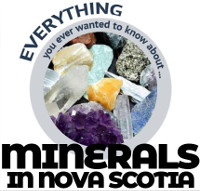- Why Mining Matters
- Jobs
- Safety
- Environment & Operations
- FAQ
- Links
- Fun Stuff
You are here

Gallihar and Dimock
Mr. Death
The Guilty Grenos
James Mitchell
Hugh McAskill
Gold Grows Under Shrubs?
Unexploded Dynamite
Tangier’s John Murphy
Joe Howe Dimock
Chats with Pioneer Miners
Charles Annand
John Scott Williams
Nicholas Fitzgerald
Chief Lonecloud
Pistols and Gold Mines
James MacDonald’s Thefts
John Vaughn
Herbert Dixon and the Halifax Explosion
James Bishop
Neily's Scandals
Waverley in 1934
Discovery of Gold at Dufferin
Hurricane Island
Fletcher and Faribault
Jack Munroe
Mine Apprentice Project
Small Gold Districts
15 Mile Stream
Tributers
E. Percy Brown and the Brookfield Mine
Barachois
Nova Rich Mines
Shad Bay Treasure Hunt
Montague 1937 Accident
Father Lanigan’s “Prospect”
George V. Douglas
The Stewart Brothers
Goldboro
Moose River's Touquoy Mine
Camerons Mountain
Jim Campbells Barren
Stanburne's Puzzling Gold Mine
Pockwock
Beaverbank Lake
Banook Mining Company
Deep Gold Mining
Wellington
Arsenic and Gold
Dynamite
War of Words
King of the Klondike
Oliver Millett
Kempt Gold Mining Company
Carleton
The Memramcook Fiasco
Love and Gold in Oldham
Montague 1893 Disaster
Central Rawdon Consolidated Mines
Cochrane Hill
Amateurish Early Gold Mining
Sable Island Gold
The Sea Wolf
Trueman Hirschfield
Alexander Heatherington
Prospector Joe Cope
Killag Quicksand
George W. Stuart
Wellington
Billy Bell
Cooper Jim Mine
South Branch Stewiacke
Walter Prest
Lake Charlotte
Acadia Powder Mills Company
The Ovens Anticline
Moose River Anticline
Avon Mine Explosion
Montague
Waverley Claims Dispute
Avon River
Moose River Disaster
Mooseland Scam
New York and Nova Scotia Gold Mining Company
Rosario Siroy and the South Uniacke Gold District
Blockhouse
Killag Gold District
Miller Lake
Baron Franz von Ellershausen
Mooseland: Nova Scotia’s first Gold Discovery
United Goldfields of Nova Scotia
Pleasant River Barrens Gold District
Lochaber Gold Mining Company
Rawdon Gold Mines
MacLean Brook
Gold in Clayton Park?!
Forest Hill
Meguma vs. Placer Gold
Uniacke
Voglers Cove
Gold River
Moosehead
Goldenville
Westfield
Indian Path
Harrigan Cove
Centre Rawdon
Nova Scotia’s Gold Mining History
WWII Gold
Middle River Gold District
Early Gold Discoveries
Halifax 1867
Paris Exhibition 1867
Mining and Tourism
An Act relating to the Gold Fields
Molega Gold District
Brookfield Gold District
Gays River
Halifax Gold
Caribou Gold District
Renfrew Gold District
Oldham Gold District
Whiteburn Gold District
Country Harbour Mines
Waverley Gold District
Robert Henderson and Klondike Gold
George Mercer Dawson
Cow Bay Gold District
Lake Catcha Gold District
Wine Harbour Gold District
Joe Howe Dimock
Joe Howe Dimock was the first prospector in Nova Scotia’s Dufferin gold district, but his dreams of striking it rich did not work out.
According to an August 30, 1883, article in the Halifax Herald, “Forty years ago there was a family of Dimock’s living at Billtown, Cornwallis. In that year, an election took place in Kings. [Former Nova Scotia premier] Joe Howe took an active part in the canvass and stayed at Dimock’s house. A child was born to the Dimock’s just about that time and the parents promised that if Howe’s candidate won, he would name his new born son in Howe’s honour.”
The Liberal candidate won and that is how Joseph Howe Dimock got his name.
As a young man, Dimock travelled from Billtown to Tangier, Halifax County, on what he said was the first boat there after Tangier’s gold rush started in 1861.
He did considerable prospecting and, he claimed, had been within one foot of discovering what would become known as the Leary gold-bearing quartz vein (aka lead), one of the richest ever found in Tangier.
The Halifax Herald article said, “Had he dug twelve inches deeper he would have discovered that valuable lead. He now frequently meditates on ‘What might have been!’ Disgusted with his want of success in gold mining, he took to stage driving, and has stuck to it for twenty years like a brick. Anything going on along the coast that Joe Howe Dimock doesn’t know, isn’t worth knowing.”
Dimock drove a stagecoach between Tangier and Marie Joseph, Guysborough County, for decades. He also delivered mail and was widely liked and respected.
After his unsuccessful efforts in Tangier, he prospected in the Dufferin area, which was known as Salmon River at the time.
Dimock told the Herald, “Eighteen years ago I prospected along the Salmon River. I had the honor of being the first prospector in that region. I always believed that a rich lead was to be found near that river. But my prospecting was more of a past time than a business. I neither had the money nor the time to work at it in earnest. But from what I saw I was satisfied that a bonanza existed there somewhere. Ten years ago I gave my opinion to an old miner named Woodman. He went up the river and panned out some twelve ounces of gold out from sand in the bed of the river. Three years or more ago when Torrance and Scaithe first came down here I told them about that district and strongly recommended them to prospect. Torrance said he’d see about it bye and bye, and devoted himself to the Tangier district. That’s where he made a big mistake. He knows it now. Only a few weeks before Kent Archibald found the Salmon River bonanza lead, I said to Mike McDonald, an old miner at Tangier: ‘Mike, if I had $10,000 in cash, I’d spend every cent of it prospecting up Salmon River.’ Time has fully proved how correct my opinions were.”
Dimock believed the Salmon River district “is the richest gold region in Nova Scotia. But who’s going to spend their money and time prospecting under the existing regime in the mines office? Nobody but a lunatic would do so! Why, there hasn’t been a man prospecting down there this season. And I have never known a season for the last 20 years during which there were not dozens, if not scores of prospectors at work all along the coast.”
Dimock went on to explain his complaint with the provincial government’s mining laws: “I might spend several thousand dollars prospecting, make my boundaries, take up the areas, and spend $10,000 in developing the mine, when some unknown man might come in and say, ‘I prospected at that spot a year ago, saw gold, and made a mark.’ And on the strength of that assertion he might get the property, on which I may have invested $10,000 or $15,000. The present state of affairs is preposterous. A blow has been struck at the gold mining industry from which, in my opinion, it will not recover for many years. Still, as I told you, I believe that to be a very rich district and when once prospectors and miners can feel an ordinary degree of security, and know that they will be protected by a paternal government, instead of having their rights trampled on and their property confiscated, they will go to work and you will find that the Salmon river district will astonish the gold mining world.”
Today, the disputes over claim staking that Dimock refers are extremely rare thanks to technology. In Nova Scotia and many other jurisdictions, staking claims is now done using online, digital mapping systems. Digital claim staking replaced the previous method of literally driving stakes into the ground to stake a claim, and the Department of Mines’ map of claims which was updated daily by hand.

















































































